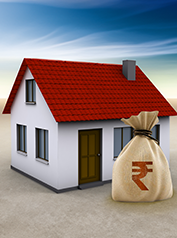
When considering purchasing a home in India, prospective buyers often face the decision between an apartment and an independent house. Each option offers distinct advantages and disadvantages, influenced by factors such as location, budget, lifestyle preferences, and future plans.
An apartment, commonly referred to as a flat, is a self-contained residential unit within a building comprising multiple such units. Typically found in urban areas, apartments are designed to accommodate several families, offering shared amenities and facilities. These may include features like swimming pools, gyms, and landscaped gardens, providing a community living experience. The maintenance of common areas is usually managed by a housing society or a dedicated management team.
An independent house is a standalone residential structure built on its own plot of land. These homes offer complete autonomy, with no shared walls or common areas, ensuring privacy and freedom in property modifications. Independent houses are prevalent in suburban and rural regions, though they are also found in select urban locales. Owners are solely responsible for the upkeep of both the building and the surrounding land.
The choice between an apartment and an independent house involves several considerations:
1. Cost Considerations
Initial Investment: Apartments often have a lower initial purchase price compared to independent houses, primarily due to the cost of land in urban areas. However, independent houses may offer better value in rapidly developing suburbs.
Maintenance Costs: In apartments, maintenance expenses are typically shared among residents, covering common areas and amenities. In contrast, independent house owners bear the full cost of maintenance, including landscaping and external repairs.
2. Space and Privacy
Living Space: Independent houses generally provide more living space, both indoors and outdoors, accommodating larger families and offering personal gardens or yards.
Privacy: With no shared walls, independent houses offer greater privacy. Apartments, however, have shared walls and common areas, which can impact personal privacy.
3. Amenities
Facilities: Apartments often come with amenities such as swimming pools, gyms, and recreational areas, enhancing the quality of life. In independent houses, while amenities can be added, they require additional investment and space.
4. Security
Safety Measures: Apartments typically have robust security systems, including gated entrances, surveillance cameras, and security personnel. Independent houses may need to invest in their own security measures, especially if located in less populated areas.
5. Location
Urban Accessibility: Apartments are often situated in prime urban locations, providing easy access to workplaces, schools, and commercial centres. Independent houses in urban areas may be limited due to space constraints and higher costs. Suburban independent houses offer more space but may require longer commutes.
6. Future Appreciation
When deciding between an apartment and an independent house, consider the following factors:
Budget: Determine your financial capacity, including the cost of the property and ongoing maintenance expenses.
Lifestyle Preferences: Assess your need for space, privacy, and desired amenities.
Location: Evaluate proximity to work, educational institutions, healthcare facilities, and social infrastructure.
Future Plans: Consider long-term goals, such as family expansion or investment potential.
Here’s a quick look at the benefits and drawbacks of buying an apartment to help you decide if it’s the right choice for you.
Pros:
Community Living: Engage with neighbours through shared spaces and organised events.
Amenities: Access to facilities like swimming pools, gyms, and recreational areas without individual investment.
Security: Enhanced safety features, including surveillance and security personnel.
Lower Maintenance: Outsourced maintenance services for common areas reduce personal workload.
Cons:
Limited Space: Restricted living space, which may not suit larger families or those desiring extensive personal areas.
Privacy Concerns: Proximity to neighbours can lead to noise disturbances and reduced privacy.
Pros:
Space and Freedom: Ample living space with the liberty to modify and expand the property.
Privacy: Isolation from neighbours ensures a high degree of personal privacy.
Land Ownership: Possession of land can offer additional benefits and potential for future development.
Cons:
Higher Costs: Substantial initial investment and increased maintenance expenses can lead to higher prices.
Security Challenges: Potential vulnerabilities in less populated areas without established security systems can pose challenges.
The decision between an apartment and an independent house hinges on individual circumstances:
Choose an Apartment if:
You prefer a cost-effective option with access to amenities and community living.
Proximity to urban conveniences aligns with your lifestyle.
Shared maintenance responsibilities appeal to your preferences.
Security and convenience are your top priorities.
Choose an independent house if:
You desire complete privacy, and spacious living.
You’re looking for a long-term investment with high land appreciation.
You’re ready to manage your own security and maintenance.
Whether you purchase a flat or an independent house, both qualify for similar tax benefits under Indian laws. Under Section 80C of the Income Tax Act, you can claim a deduction of up to ₹1.5 Lakhs for principal repayment of a home loan. Additionally, Section 24 allows for deductions up to ₹2 Lakhs on interest paid for self-occupied property. These benefits apply to both types of homes, provided they are financed through home loans.
Apartments typically come with a host of built-in amenities such as clubhouses, swimming pools, security systems, power backup, and landscaped gardens. These are included as part of the housing society’s infrastructure. Independent houses, on the other hand, don’t come with such shared facilities unless the owner personally invests in them. However, they offer the flexibility to customise amenities to suit personal preferences like adding a private pool or rooftop garden.
Yes, joint home loans are available for both flats and independent homes in India. In fact, many buyers opt for joint loans with spouses or family members to increase loan eligibility. Joint loans also allow both borrowers to claim tax benefits individually on interest and principal repayments, effectively doubling the benefits under Sections 80C and 24.
Apartments generally offer enhanced safety due to gated entrances, CCTV coverage, intercom systems, and on-site security personnel. The presence of neighbours in close proximity also adds to the sense of security. Independent houses, especially those in isolated or developing areas, may pose safety concerns unless robust security measures are independently installed. Safety in a standalone property depends largely on the locality and precautions taken by the owner.
To boost resale value, consider regular maintenance, aesthetic upgrades, and energy-efficient modifications. For flats, being in a well-maintained society with premium amenities increases value. Location within the city, floor level, and view also play a role. For independent homes, landscaping, modern interiors, smart home features, and proper documentation of land and property can significantly enhance market appeal. The future value of both depends on real estate trends, connectivity, and upcoming infrastructure projects.
From an investment standpoint, the choice depends on your financial goals and timeline. Apartments in urban areas can offer consistent rental income due to demand from working professionals and students. They also come with lower maintenance responsibilities, making them attractive for first-time investors. On the other hand, independent homes offer long-term investment potential, especially if located on appreciating land in developing areas. While they may require higher upfront capital and upkeep, they hold significant value for future resale, especially due to land ownership.












